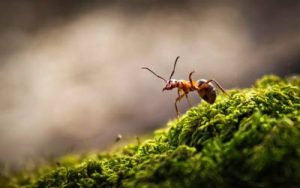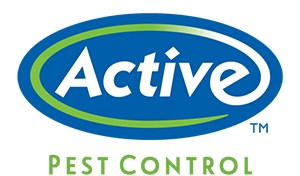 Ants can be found in practically every corner of the world, but that doesn’t make them any more pleasant when they are marching across your kitchen counter. Although these pests are small, a single colony can contain between 50,000 to 500,000 ants! With how large ant colonies can grow, it can be incredibly hard to get rid of them hard on your own. Although it may seem like sometimes you are on your own in the battle against ants, natural ant predators are working alongside you to keep the ant population in check.
Ants can be found in practically every corner of the world, but that doesn’t make them any more pleasant when they are marching across your kitchen counter. Although these pests are small, a single colony can contain between 50,000 to 500,000 ants! With how large ant colonies can grow, it can be incredibly hard to get rid of them hard on your own. Although it may seem like sometimes you are on your own in the battle against ants, natural ant predators are working alongside you to keep the ant population in check.
What Eats Ants?
Ants have many natural predators that help regulate the ant population. Below are a few Georgia native animals that enjoy munching on ants:
- Armadillos: Armadillos use their long claws to dig in the ground in search of insects. Ants are one of their favorite snacks.
- Birds: Birds such as sparrows, starlings and woodpeckers are known to eat ants. In addition to eating ants, some birds participate in a ritual called anting where the bird, for unknown reasons, will kill and rub dead ants on their body.
- Insects: Many common insects will also eat ants as part of their diet. Beetles, praying mantises, spiders and even other ants will feast on ants.
- Rodents: Rodents are opportunistic eaters and some are known to eat a wide range of small insects, including ants.
- Bears: When young bears are transitioning to eating solid food, they will often search for ant colonies to eat. Once a bear is mature, they will usually only eat ants in times of food scarcity.
How to Prevent Ants
The most important step in keeping an ant free home is ant prevention. Ants are able to enter your home through even the smallest hole of crack. Examine the exterior of your house regularly, sealing any entrance points. This will not only help prevent ants in your home but also a multitude of other pests.
Ants will commonly enter a home in search of food and can often be found marching across your kitchen floor or counter. Make sure to clean any spills or crumbs quickly and keep food in airtight containers.
Although these measures will help keep ants out of your home, the best way to keep ants away for good is by hiring a trusted local pest control company.
Professional Ant Extermination
While natural ant predators are helpful in controlling the ant population, the most effective way to keep ants out of your home is through professional ant extermination. Trusted exterminators, such as those at Active Pest Control, not only eliminate existing ant infestations but also work with you to create a plan to prevent future pest invasions.
Active Pest Control has been keeping Georgia homes pest free for generations. We understand the frustration caused by ant infestations and are dedicated to providing long-lasting solutions. If you’re tired of dealing with ants or any other pests in your home, contact the experts at Active Pest Control today for a free quote!



 country, but hearing that may come with some degree of confusion. What is TAP insulation? Why would a pest control company install insulation? Whatever questions you may have about the product or the process, we can answer them!
country, but hearing that may come with some degree of confusion. What is TAP insulation? Why would a pest control company install insulation? Whatever questions you may have about the product or the process, we can answer them!